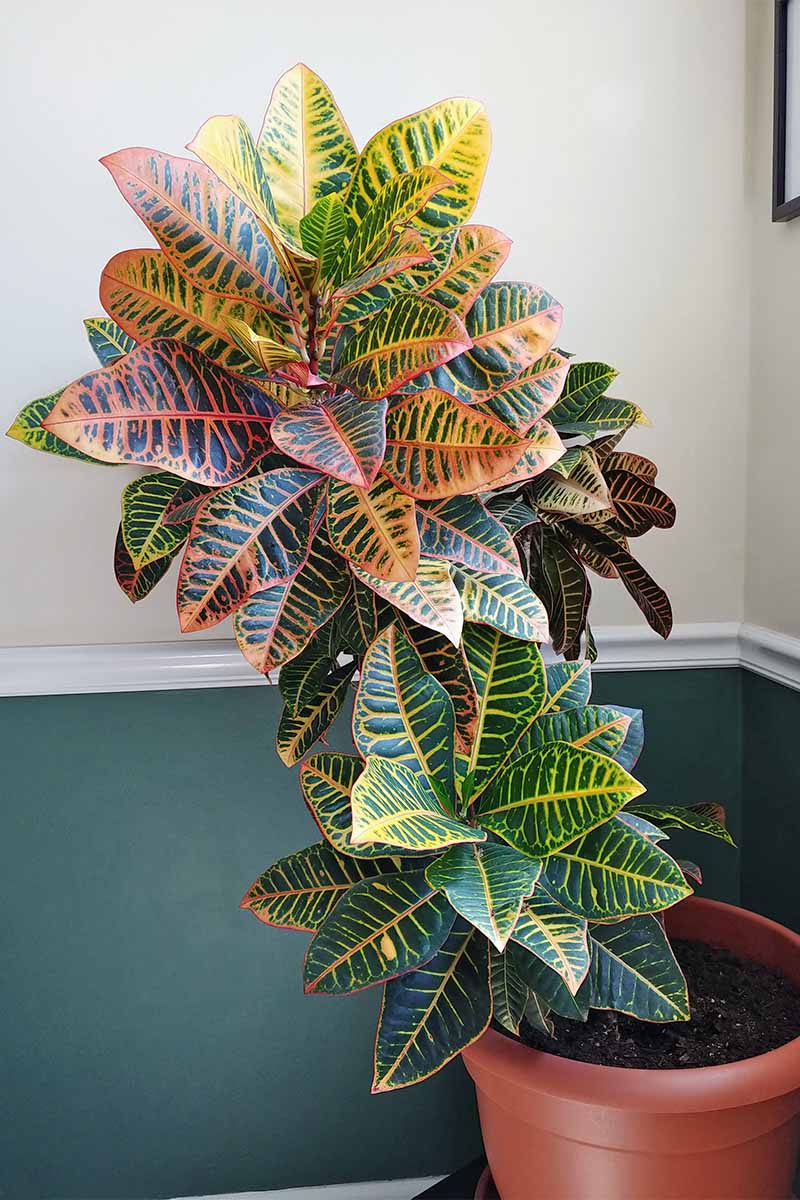
Source gardenerspath.com
Welcome to our comprehensive guide on croton plant care indoor. If you are a plant enthusiast looking to add some vibrant foliage to your indoor space, croton plants are an excellent choice. Known for their colorful, variegated leaves, croton plants can bring a tropical feel to any room. In this article, we will explore the best practices for successfully caring for croton plants indoors, from lighting and watering to pest control and propagation. Whether you are a beginner or a seasoned plant parent, this guide will provide you with all the information you need to keep your croton plants thriving.
Choosing the Right Location
1. Lighting Requirements
Croton plants thrive in bright, indirect light. Place your croton plant near a window that provides filtered sunlight, as direct sunlight can scorch the leaves. If you don’t have a suitable window, you can also use artificial grow lights to provide the necessary light intensity.
2. Temperature and Humidity
Croton plants are native to tropical regions, so they prefer warm and humid environments. Aim to keep the temperature around 70-80°F (21-27°C) during the day and above 60°F (15°C) at night. Additionally, maintaining a humidity level of 50% or higher by using a humidifier or placing the pot on a tray filled with water and pebbles can help your croton plant thrive.
Proper Watering Techniques
1. Watering Frequency
When it comes to watering your croton plant, it’s important to strike the right balance. Overwatering can lead to root rot, while underwatering can cause the leaves to wilt and drop. As a general rule, water your croton plant when the top inch (2.5 cm) of soil feels dry to the touch. Avoid allowing the plant to sit in standing water, as this can lead to root issues.
2. Watering Method
When watering your croton plant, thoroughly saturate the soil until water drains from the bottom of the pot. Empty any excess water from the saucer to prevent waterlogging. Watering from the bottom by placing the pot in a tray of water for a few minutes can also ensure thorough hydration.
Fertilizing for Optimal Growth
1. Choosing the Right Fertilizer
Croton plants benefit from regular fertilization. Choose a balanced, water-soluble fertilizer with a ratio of 20-20-20 or similar. Dilute the fertilizer to half the recommended strength and apply every two weeks during the growing season (spring and summer).
2. Fertilizer Application
Before applying fertilizer, make sure the soil is well-moistened. Apply the diluted fertilizer to the soil around the base of the plant, avoiding direct contact with the leaves. Be careful not to overfertilize, as this can lead to leaf burn. Always follow the instructions on the fertilizer package for the best results.
Table Breakdown: Common Croton Varieties and Care Requirements
| Croton Variety | Lighting Requirements | Watering Needs | Temperature Range | Humidity Preference |
|---|---|---|---|---|
| Classic Croton (Codiaeum variegatum) | Bright, indirect light | Allow top inch of soil to dry before watering | 70-80°F (21-27°C) | 50% or higher |
| Threadleaf Croton (Codiaeum variegatum ‘Petra’) | Bright, indirect light | Water when the top inch of soil feels dry | 70-85°F (21-29°C) | 50% or higher |
| Mammy Croton (Codiaeum variegatum ‘Mammy’) | Bright, indirect light | Water thoroughly when the top inch of soil is dry | 65-75°F (18-24°C) | 50% or higher |
Frequently Asked Questions about Croton Plant Care Indoor
Q: How often should I repot my croton plant?
A: Croton plants generally require repotting every 1-2 years, or when the roots become crowded and start to grow out of the drainage holes. Choose a pot that is slightly larger than the current one and use well-draining soil to ensure proper root health.
Q: What should I do if the leaves of my croton plant start to turn yellow?
A: Yellowing leaves can indicate various issues, such as overwatering, underwatering, or insufficient light. Assess the watering and lighting conditions and make necessary adjustments. Trim off any severely damaged or yellow leaves, ensuring to use a clean, sharp pair of scissors.
Q: Can I propagate my croton plant?
A: Yes, croton plants can be propagated through stem tip cuttings. Take a 4-6 inch (10-15 cm) cutting with at least two sets of leaves. Remove the lower leaves and dip the cut end in rooting hormone (optional) before planting it in a well-draining potting mix. Place the cutting in a warm and humid environment, misting it regularly, until roots develop.
Q: How can I prevent pests from infesting my croton plant?
A: Common pests that can affect croton plants include mealybugs, spider mites, and scale insects. Regularly inspect your plant for any signs of pests, such as sticky residue, webs, or small insects. If an infestation is detected, isolate the plant and treat it with an appropriate insecticide or by using natural pest control methods, such as wiping the leaves with a mixture of water and mild dish soap.
Q: Can croton plants tolerate low light conditions?
A: Croton plants thrive in bright, indirect light and may not tolerate low light conditions well. In low light, their foliage may become less vibrant, and their growth may slow down. If you have limited natural light, consider supplementing with artificial grow lights to ensure their optimal growth.
Conclusion
Croton plants are visually striking and can add a touch of tropical beauty to any indoor space. By providing the right lighting, temperature, humidity, and watering regimen, you can enjoy a vibrant and healthy croton plant as part of your indoor garden. Remember to regularly check for signs of pests and nutritional deficiencies and address any issues promptly. With proper care, your croton plant will reward you with its colorful foliage year-round.